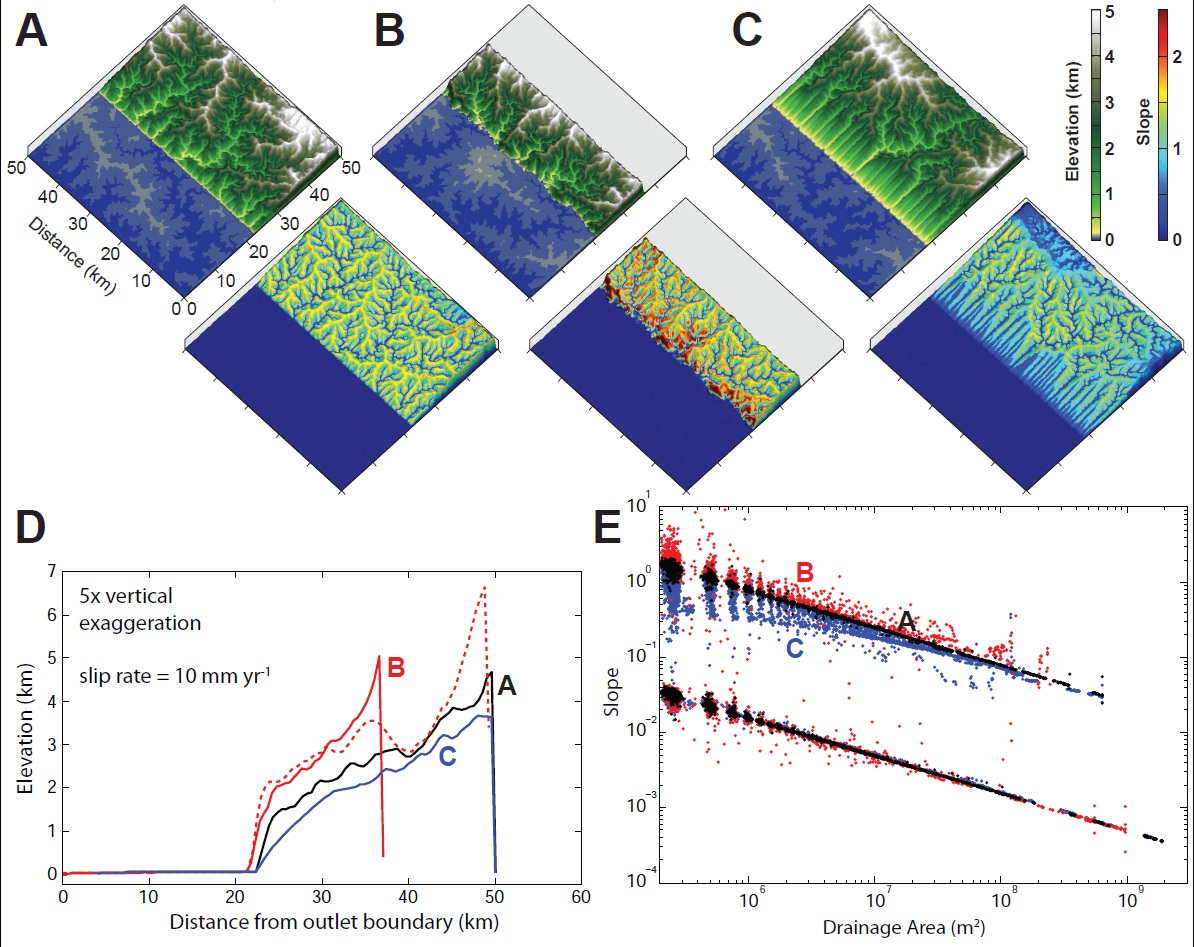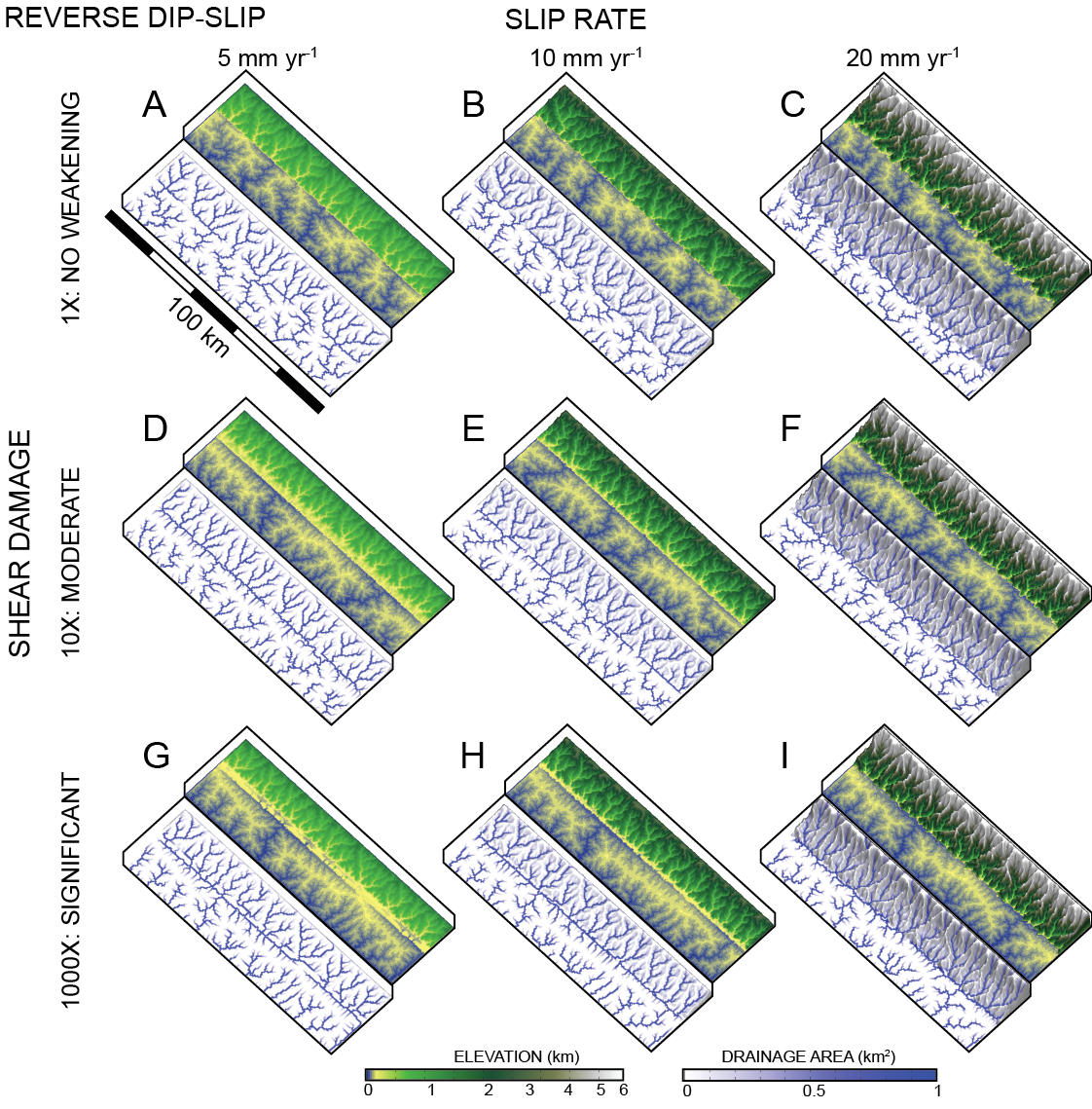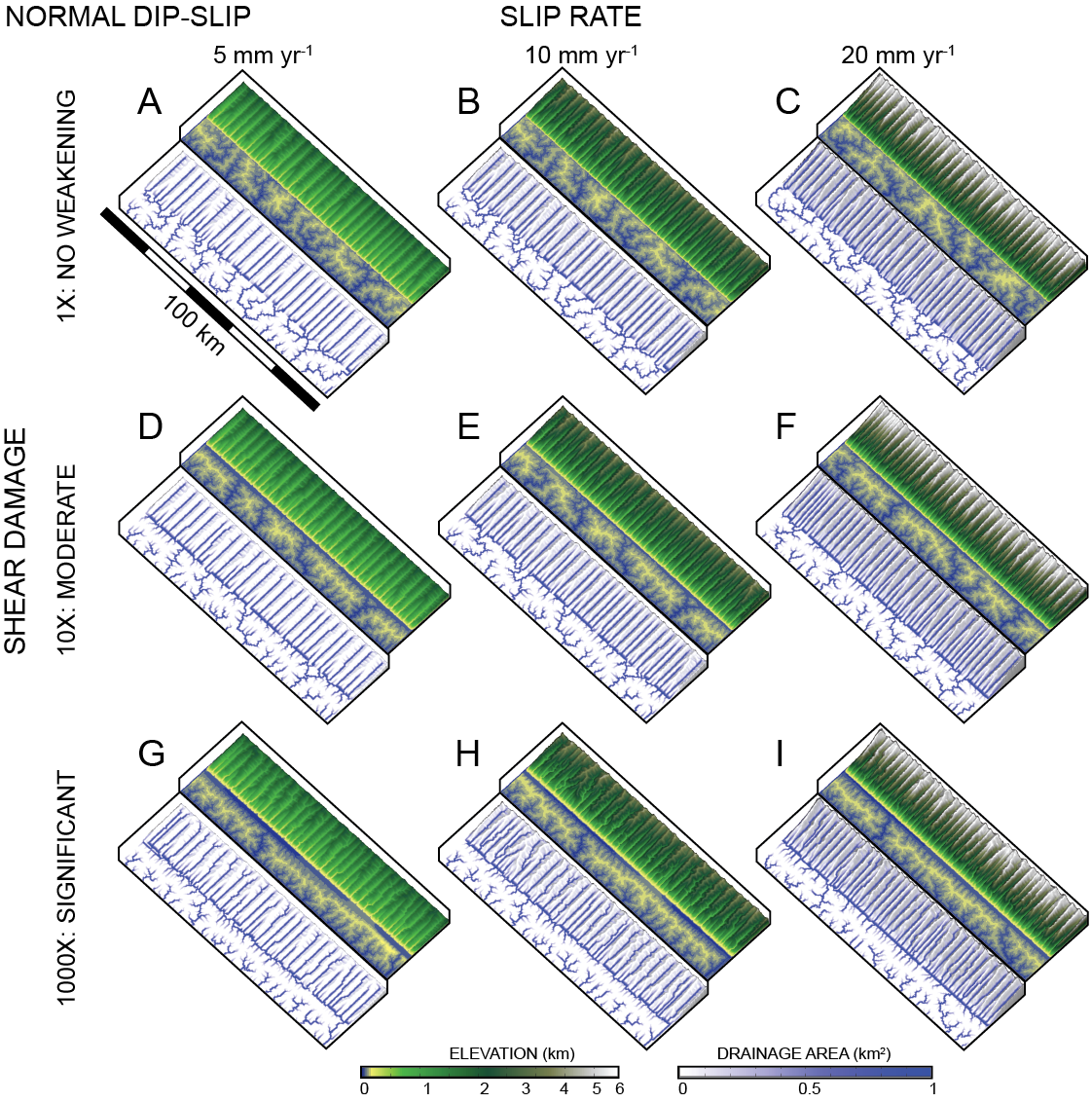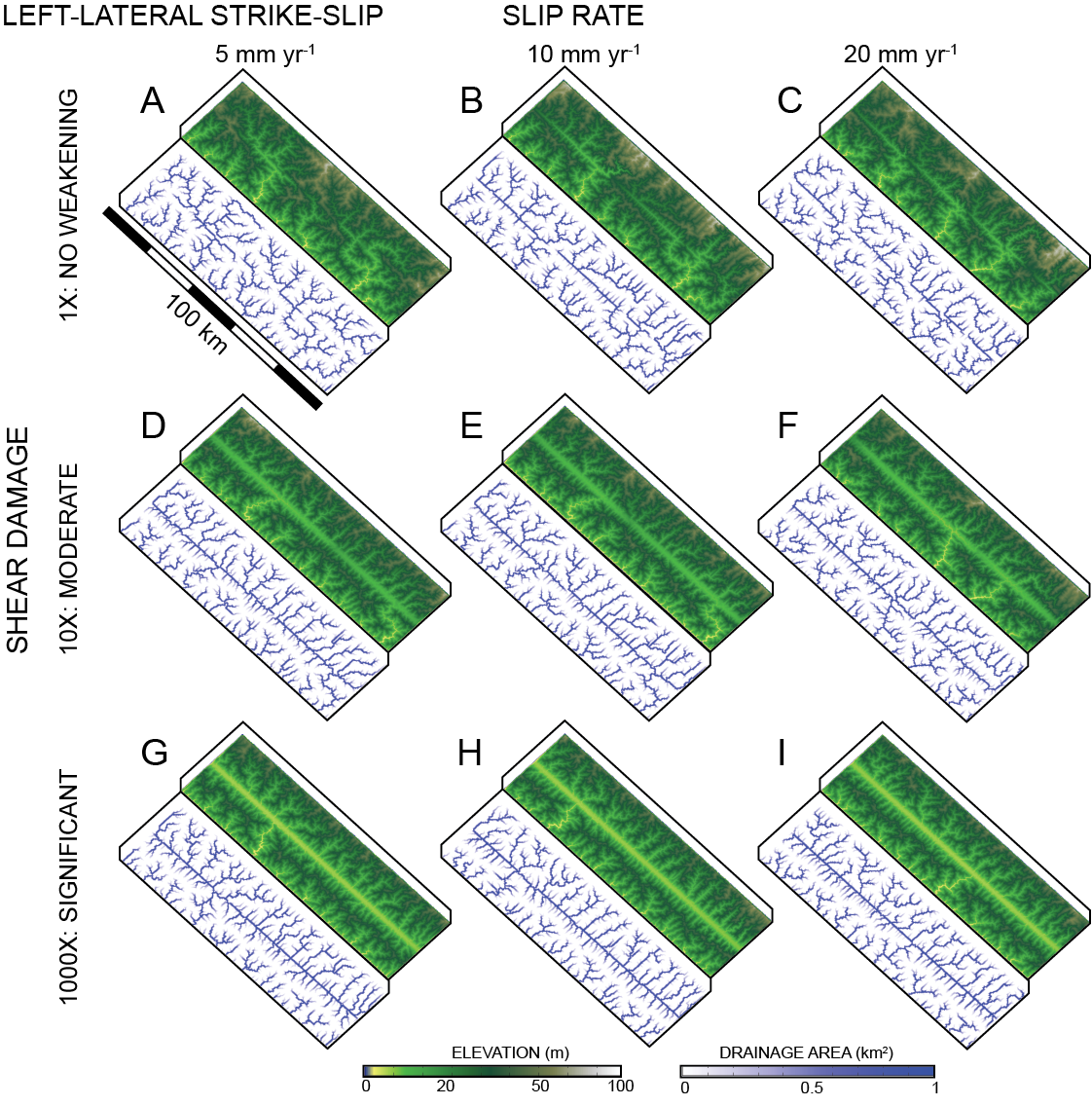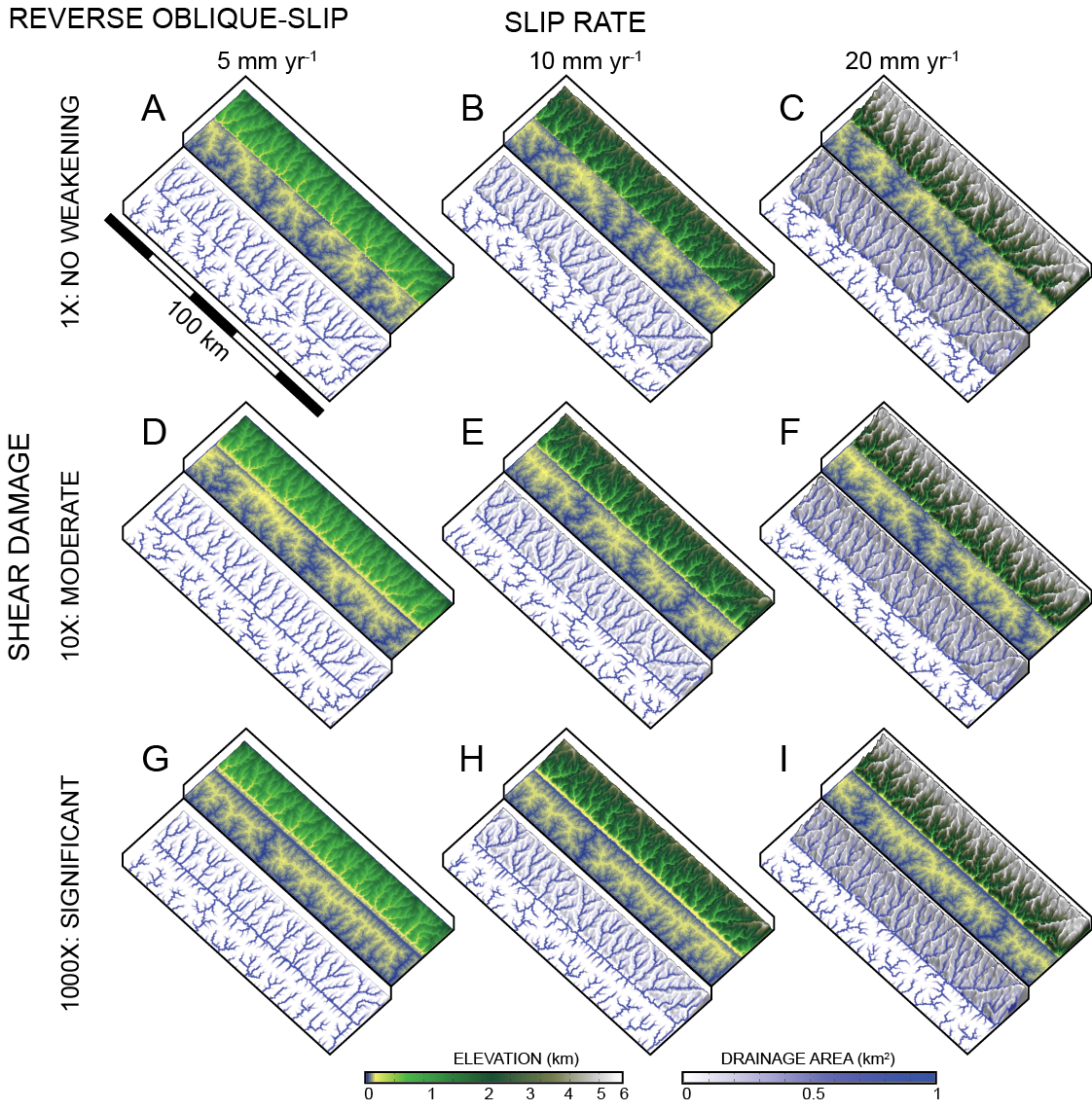Difference between revisions of "The role of surface displacement in landscape evolution"
| Line 5: | Line 5: | ||
! style="width:500px" | [[File:kin_slope-v-area.jpg|500px|thumb|Experimental models used to determine influence of lateral surface motion on surface slopes. (A) Block uplift, no lateral motion (black); (B) reverse dip-slip (red); (C) normal dip-slip (blue). (D) E-W topographic profiles. (E) Slope versus area log-log plots]] | ! style="width:500px" | [[File:kin_slope-v-area.jpg|500px|thumb|Experimental models used to determine influence of lateral surface motion on surface slopes. (A) Block uplift, no lateral motion (black); (B) reverse dip-slip (red); (C) normal dip-slip (blue). (D) E-W topographic profiles. (E) Slope versus area log-log plots]] | ||
|- | |- | ||
| + | ! {{#ev:youtube|epZmuzxnGk8}} | ||
! style="width:500px" | [[File:kinematic-01.png|500px|thumb|left|Reverse dip-slip faulting]] | ! style="width:500px" | [[File:kinematic-01.png|500px|thumb|left|Reverse dip-slip faulting]] | ||
! style="width:500px" | [[File:kinematic-02.png|500px|thumb|left|Normal dip-slip faulting]] | ! style="width:500px" | [[File:kinematic-02.png|500px|thumb|left|Normal dip-slip faulting]] | ||
Revision as of 00:25, 19 May 2015
The objective of this project is to study the effects of 3D fault slip on landscape evolution. Specifically, there can be implications for the steepness of rivers and the evolution of drainage network patterns when considering the full 3D solution for fault slip. Our method is to apply kinematic conditions to points on a model landscape surface, representing tectonic motion, and allow for surface processes to erode the surface. Additionally we include rock damage associated with shear strain as an influence on rock erodibility surrounding the fault.
Images and models produced by Sam Roy
